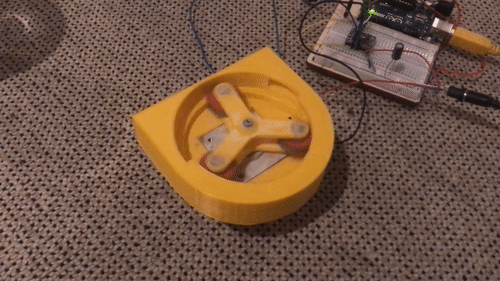Testing:
Similar to Prototype 1, I tested this prototype using the same code that allows the stepper motor to continuously rotate.
Testing at max motor speed had the same issue as the previous prototype as the torque is still lower than required at max speed. See video below of motor vibrating and struggling to rotate.
However for this prototype, the motor was able to successfully pump fluid at lower speeds/ here is a video of the motor in operation ( with no tubing)

I used a latex tubing instead the previous silicone tubing as it was more flexible. Additionally, after testing several times the adhesive between the shaft and rotors was removed and as such the motor shaft began rotating independently of the rotor ( similar to what has happened to the first prototype)
i have also noticed that because the bearing height is not correct, they collide with a sharp edge in the raceway.
Verdict:
- From Prototype 2, I concluded that the size of the casing and tubing seem to be sensible for the motor's output and such will not be changed in the final design.
- Adhesive should not be used to glue rotor and shaft nor motor and casing as it makes it very difficult to disassemble.
- Maximum Motor speed should not be used as it significantly reduces the torque output and causes the components to rapidly vibrate that can then damage the structure.
- Need to add fillets to reduce sharp edges that slow down the bearings as they rotate.
 Ali
Ali
Discussions
Become a Hackaday.io Member
Create an account to leave a comment. Already have an account? Log In.